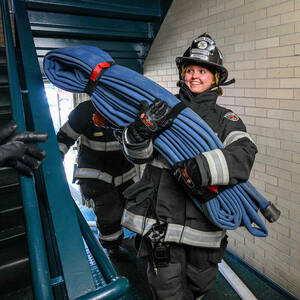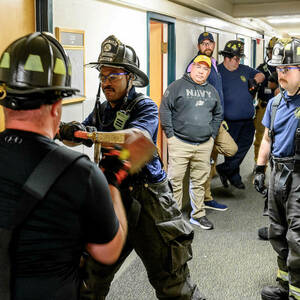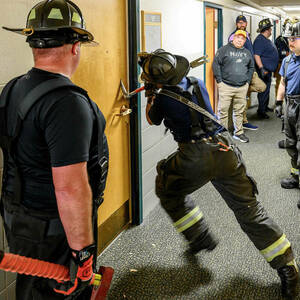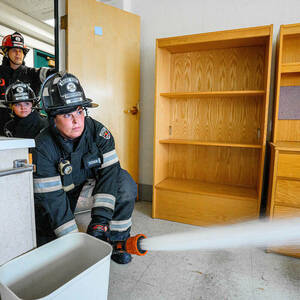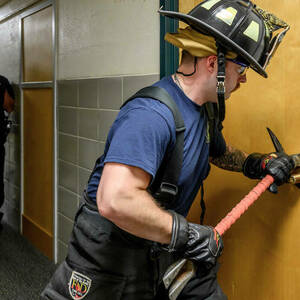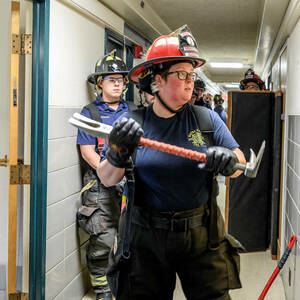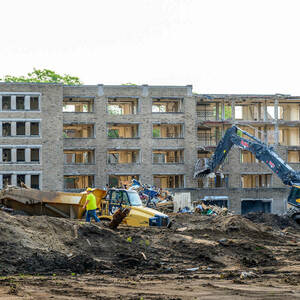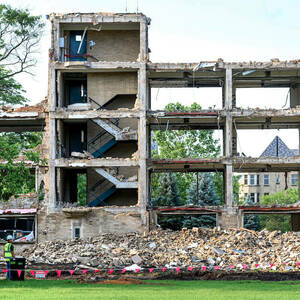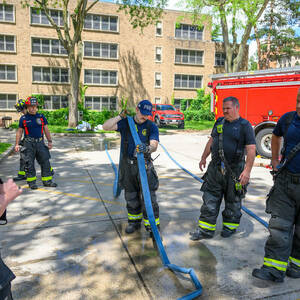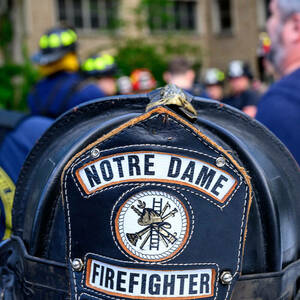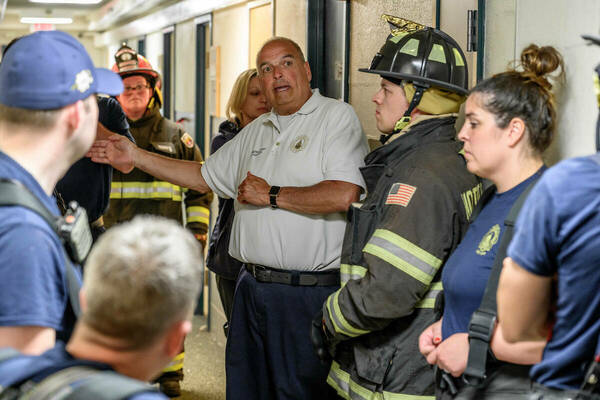
Fisher Hall has been reduced to rubble as new construction prepares to take its place. The residence hall, which stood from 1952 until now, played one last role beyond housing students: serving as the perfect firefighting training ground for the Notre Dame and Clay Fire departments as well as the Notre Dame Police Department.
“When we found out that they were going to tear those two buildings down (Fisher and Pangborn Halls), it gave us an opportunity to train in a real structure,” Assistant Fire Chief Tim Hoeppner said. He is in his 35th year at Notre Dame, with a total of 41 years of fire service. The Notre Dame Fire Department, founded in 1879, is the oldest campus-based fire department in the United States.
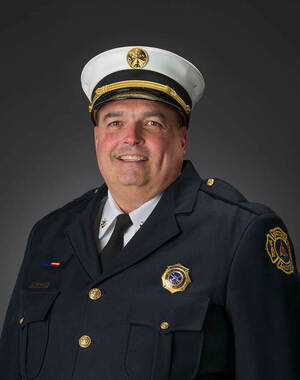
Hoeppner coordinated with the facilities design team to get access to the now-defunct building. He worked with the training division for Clay Fire Territory to put together a training day for both departments, along with NDPD. The training was held in May and included “breaching” or opening doors with tools. They also conducted “evolutions”—scenarios involving firefighters carrying the fire hose up stairwells.
The training, conducted annually in different locations, ran for a full day with 15 in attendance. This level of training is usually conducted off campus. While it didn’t involve “live” fire, it did give the agencies the chance to simulate a high-rise drill in the four-story building (anything above four floors is considered a high-rise).
“We simulated a room fire, stretching a hose line from the standpipe that’s in the building stairwell,” Hoeppner said. The standpipes—water pipes in places like stairwells—allow the firefighters to use a water system from within the building instead of from the fire truck.
Hoeppner explained the additional advantages of using a standpipe found in the stairwells of a building. In a residence fire, the hose line would be filled with water or “charged” in the front yard and then taken into the residence. If the fire occurs in a taller building, that task becomes more difficult. “You have to charge that line within the building, go up the stairs and up the stairs and manage that. It’s a lot harder when it’s full of water and it’s got 150 pounds of pressure on it, versus no water in it. You can just drag it around stuff then.”
Firefighters in their complete gear and equipment carry as much as an additional 90 to 100 pounds on their bodies, in addition to the weight of the charged fire hose. Each hose pack consists of 200 feet of hose, with each section at 100 feet. The crews must “size up” or estimate the length of hose needed to reach the fire source. Hoeppner asks, “Can we get it with 100 feet? Or do we know we have to stretch to 200 feet?”
That 200-foot stretch of hose also serves as a precautionary measure.
“If things go bad, you have to be able to get out. And you don’t want to go more than 200 feet into a structure,” Hoeppner said. “You may have to come at it from a different side. It may turn out that the fire is so big that your strategy is going to be defensive instead of offensive.”
Clay Fire Territory’s participation gave both agencies, which often support each other but carry different tools, the opportunity to try out those tools as well as different techniques. In the event of a real emergency, the NDPD would provide perimeter security, assistance with evacuation, and, as the situation might dictate, access or entry into a space.
Nearly 100 percent of the campus is supported with a sprinkler system and detectors through a state-of-the-art fire alarm system, giving firefighters early notification. Even so, a huge benefit of Notre Dame having its own fire department is simply knowing the campus.
“We’re very familiar with our buildings and our systems,” Hoeppner said. “We can trust that the standpipes are going to work for us. We can trust our system.”
Originally published by at ndworks.nd.edu on August 12, 2024.
